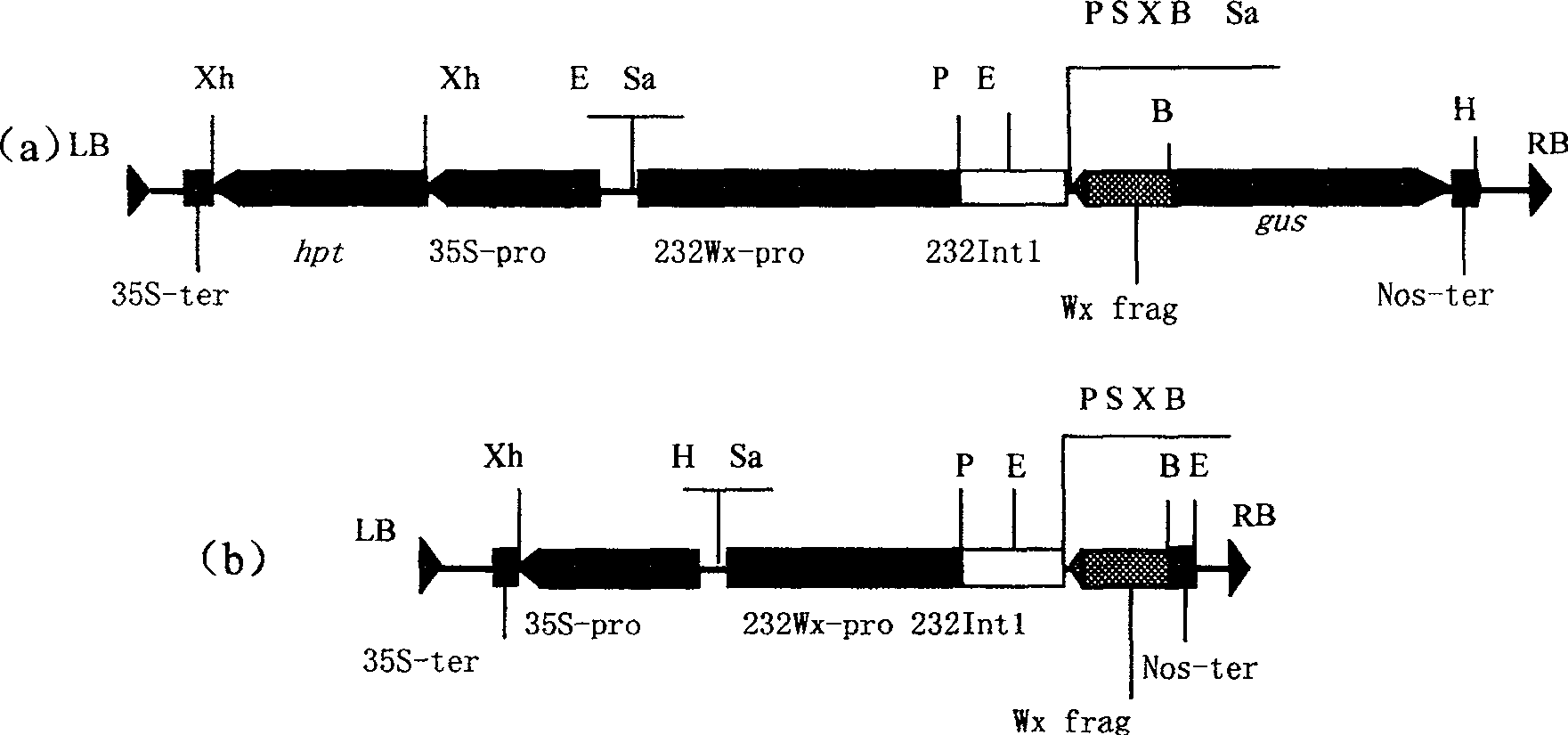Expression vector of duplicate inverted waxy gene, preparation method, and application
A waxy gene and expression carrier technology, applied in the fields of genetic engineering and plant genetic engineering, can solve problems such as difficulty in obtaining transformants, unfavorable safety control of genetically engineered plants, and insignificant reduction in related gene expression
- Summary
- Abstract
- Description
- Claims
- Application Information
AI Technical Summary
Problems solved by technology
Method used
Image
Examples
Embodiment 1
[0052] This example is to illustrate the method for constructing a double antisense gene expression vector and the structural composition of the obtained vector.
[0053] Methods such as conventional PCR amplification, restriction endonuclease digestion and ligation involved in the operation of constructing the expression vector mainly refer to "Molecular Cloning Experiment Guide" (Sambrook J et al., Molecular Cloning Experiment Guide (Second Edition), Science Press, 1992). For the experimental methods that do not specify specific conditions in the examples, usually follow the conventional conditions or the conditions suggested by the manufacturer.
[0054] From the published Nipponbare rice genome, search for a DNA sequence with a length of about 100 bp at the two ends of the BamHI restriction site and no SmaI and XhoI restriction sites in the nucleotide sequence, and design primers based on the sequence, with primers at both ends Carries SmaI restriction site and XhoI restr...
Embodiment 2
[0062] This example is to illustrate how to transform rice using the constructed expression vector of the double antisense waxy gene.
[0063] The Agrobacterium tumefaciens cultivation, rice transformation and resistant callus selection and plant regeneration involved in the cultivation of transgenic rice are mainly carried out according to the method of Liu Qiaoquan (Liu Qiaoquan et al., Journal of Plant Physiology, 1998, 24(3): 259-271) .
[0064] Using the co-transformation method mediated by Agrobacterium tumefaciens (Li Jianyue et al., Science Bulletin, 2004, 49(24): 2556-2561) to introduce the p13AW-2 expression vector into rice such as Shangshida No. 2 or Chao 2-10 The rice line or variety with an amylose content of about 15% can obtain a new type of germplasm with low amylose content that has no resistance selection marker gene, can be planted in the middle and lower reaches of the Yangtze River.
PUM
 Login to View More
Login to View More Abstract
Description
Claims
Application Information
 Login to View More
Login to View More - R&D
- Intellectual Property
- Life Sciences
- Materials
- Tech Scout
- Unparalleled Data Quality
- Higher Quality Content
- 60% Fewer Hallucinations
Browse by: Latest US Patents, China's latest patents, Technical Efficacy Thesaurus, Application Domain, Technology Topic, Popular Technical Reports.
© 2025 PatSnap. All rights reserved.Legal|Privacy policy|Modern Slavery Act Transparency Statement|Sitemap|About US| Contact US: help@patsnap.com



